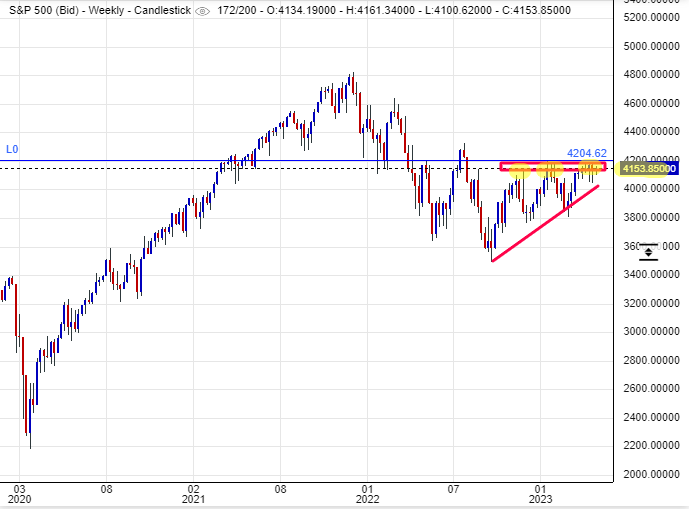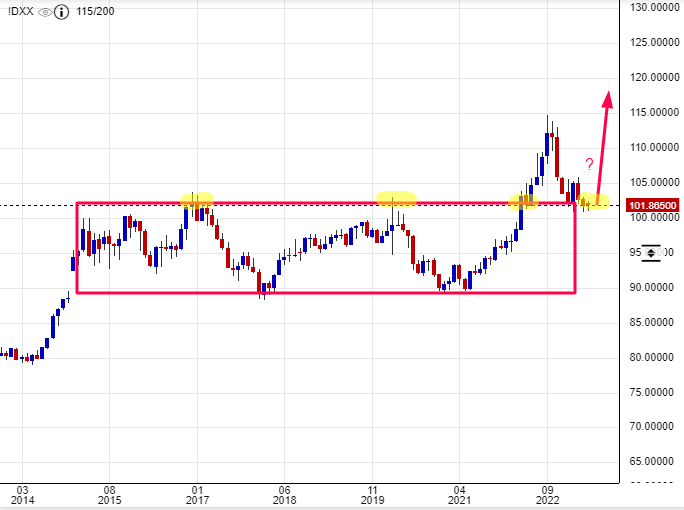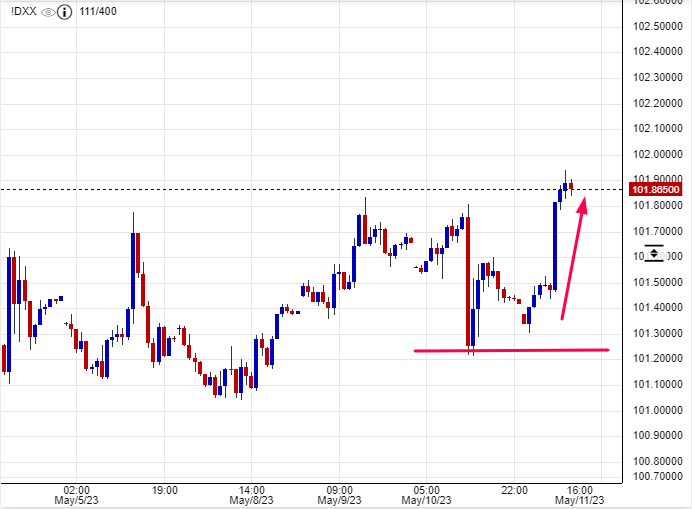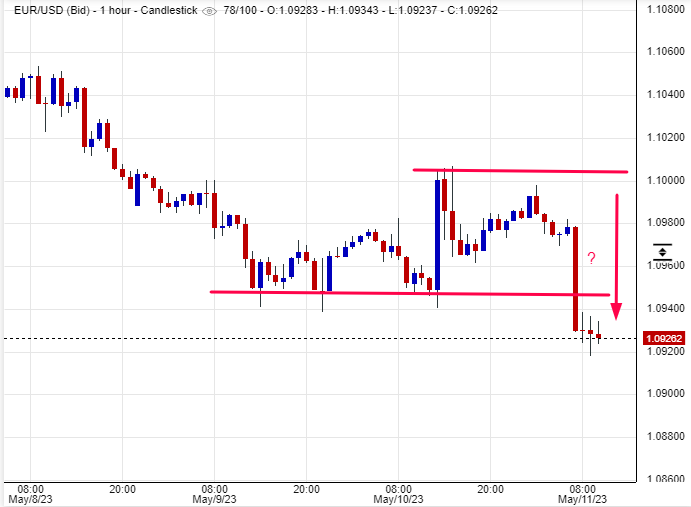- Summary:
- Inflation, EURUSD, DXY, SP500, FED, Expectations, Interest Rates,
Something is wrong with the good inflation data released by the US.
It shows an annualised inflation rate of 4.9%, against an expected 5%. The year-on-year rate came in at 0.4%, in line with expectations.
Most analyst houses expected that such a positive inflation figure would drive the market higher, ruling out further interest rate hikes by the Fed this year as unnecessary, given that inflation was correcting itself.
What are markets saying?
However, the reaction of the markets in the hours following the release of the data showed a different reaction.
For starters, Wall Street’s largest stock index, the SP500, has yet to break through its 4200 point resistance formed during the summer of 2022. Twice we have approached these price levels, in December 2022 and February 2023. The reaction in both cases was a market contraction of about 400 points down. Will it be different this time?

On the other hand, the reaction of the DXY dollar index is also suspicious.
If the analysts message is correct, why is the dollar index rallying? This index is showing a strengthening of the dollar against other currencies, which would be inconsistent with the perception that the Federal Reserve is loosening its monetary policy pressure.


DXY Index Short Term – Netdania.com
The first market to show this dollar pressure is the EURUSD. It has retreated from a high of 1.1050 to the current high of 1.0930. A free fall of more than 100 pips.ç


Inflation is everything.
Have you noticed that almost all the global financial news is concerned with inflation rates? It is normal, in theory it is the main variable that determines what the policy interest rates are going to be.
The curious thing is that today we have two interesting pieces of information in this respect. On the one hand, the CES consumer surveys conducted in Europe, which are taken into account by the ECB to establish its monetary policies, show a consumer perception of a rise in prices during the last month. If these perceptions are correct, it means that the inflation rate could pick up in Europe in the coming periods.
Paradoxically, on the other side of the world, in the world’s second-largest economy, the problem seems to be the opposite, deflation. China reported an inflation rate of 0.1% compared to 0.7% the previous month. Expectations were that this rate would be 0.4%.
In other words, there is even talk of deflationary risks, given that the producer price index (PPI), which reflects the prices that factories charge wholesalers for products, fell by 3.6 % in April, year-on-year, compared to a fall of 2.5 % in March.
The major concern with these data from China is that the country’s domestic demand is weakening, and thus its economic activity. Meaning that the global economy could be slowing down.
We will be watching for further data.
Please remember that this article is not intended to advise or influence the operating judgement of any reader. Financial markets involve high risk, please consult your financial advisor before investing.

